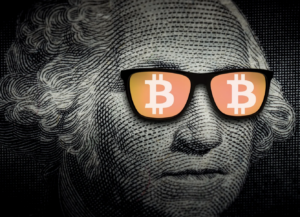Will this be the start of a new “volcanic age”? That is the question on everyone’s minds as the resurfacing of the Icelandic Fault brings about unprecedented volcanic activity in the town of Grindavik. This small Icelandic town has been almost destroyed by two short eruptions this month, catching residents and experts off guard. The lack of significant seismic activity prior to these eruptions suggests that the magma is on the verge of erupting at any moment.
What makes Grindavik’s situation even more precarious is the fact that the town was constructed atop lava flows that are 800 years old. This raises concerns about the very existence of the city, as the likelihood of future eruptions remains uncertain. Little advance notice of the next eruption is probable, as the last two eruptions were preceded by only a few hours of critical seismic activity indicating the fast ascent of magma to the surface.
One potential danger that experts have highlighted is the possibility of an undersea eruption, which could cause an explosive phenomenon and release more volcanic ash into the atmosphere. This is reminiscent of the 2010 eruption of the Eyjafjallajokull volcano, which ejected a massive quantity of ash into the sky, disrupting travel plans worldwide and leaving millions of people stranded in airports. However, specialists doubt that the Reykjanes Peninsula would be the site of such a severe occurrence.
The recent volcanic activity in Iceland seems to suggest that the Earth is sending out very obvious signals that a new age of volcanic activity is starting. On Sunday, a number of homes were leveled by the glowing lava of a volcanic eruption in Grindavik. This eruption prompted the evacuation of the fishing community, which had already been heavily affected by a eruption last month. It wasn’t until Monday that officials announced that the most recent volcanic activity had ceased, allowing residents to return to their homes.
The eruption in Grindavik is a reminder of the long-dormant fault beneath Iceland’s subsurface. This fault is located on the boundary between the North American and Eurasian tectonic plates, known as the Mid-Atlantic Ridge. While the Reykjanes Peninsula has not seen an eruption like the one on Sunday in millennia, it is worth noting that this is the sixth eruption in as many years. Volcanologist Patrick Allard of the Institute Physique du Globe in Paris believes that Iceland may be entering a new phase of very active volcanoes that could last decades.
Prior to the recent eruptions, there were clear signs of magma rising from the depths and seeping into the area 3 to 10 kilometers below the surface. These signs of plate separation and magma movement were observed by scientists, indicating that a change was imminent. Allard describes the situation as a new episode of plate separation that could last several years, possibly decades. The ground became distorted as magma rose from the depths, preparing for the eruptions that followed in March 2021.
According to Allard, the magma is now very close to the surface and ready to erupt. He explains that the thick crust along the Icelandic fault will aid in these pressure releases of magma, but there is still a possibility of a huge volume of magma being emitted.
The delicate fracture where the Icelandic fault lies is of particular concern due to its proximity to the Svartsengi geothermal power station. This power station supplies water and energy to the 30,000 people living on the Reykjanes Peninsula, accounting for 10% of Iceland’s total population. The station’s infrastructure and the population it serves are at risk if the fault were to break.
Additionally, the eruptions have also impacted popular tourist sites in Grindavik, such as the Blue Lagoon. This renowned geothermal spa has been closed as a result of the eruptions, disappointing tourists who visit to enjoy the relaxing hot springs.
In conclusion, the recent volcanic activity in Grindavik and the resurfacing of the Icelandic Fault have raised concerns about the possibility of entering a new “volcanic age.” The unpredictability of the eruptions and the potential dangers they pose to the town of Grindavik and its surrounding areas have brought about a sense of urgency among residents and experts. Only time will tell what the future holds for Iceland, but for now, the island seems to be on the verge of a significant period of volcanic activity that could shape the region for years to come.






